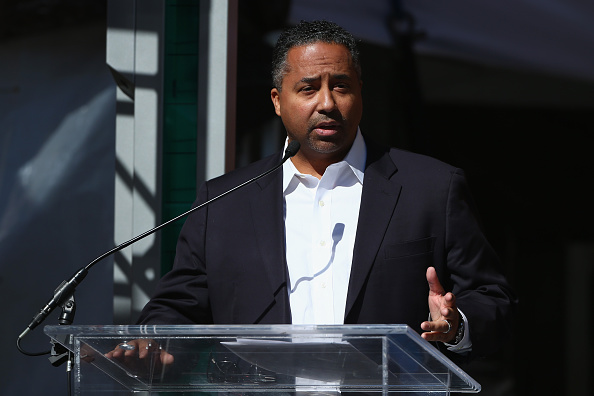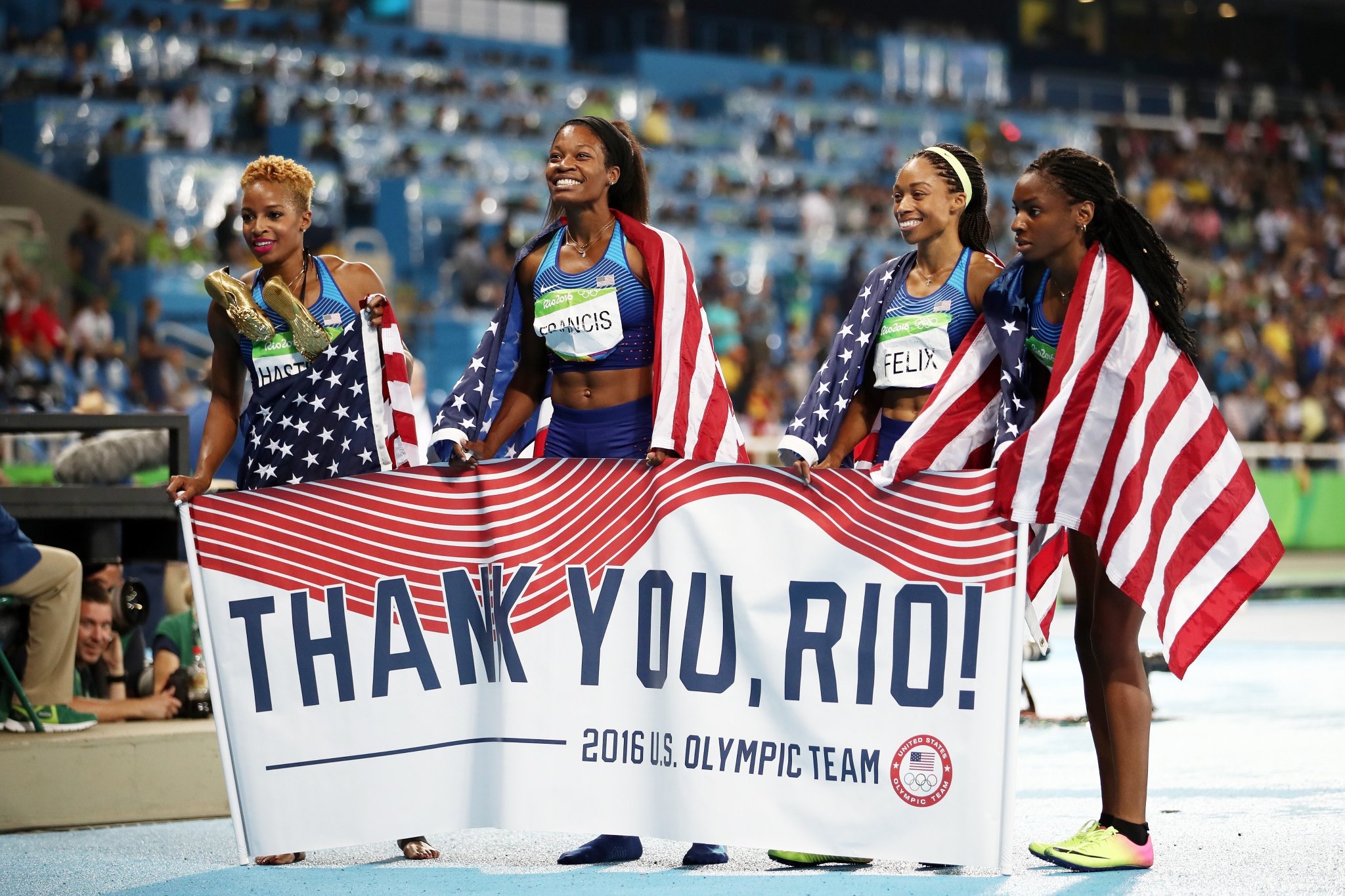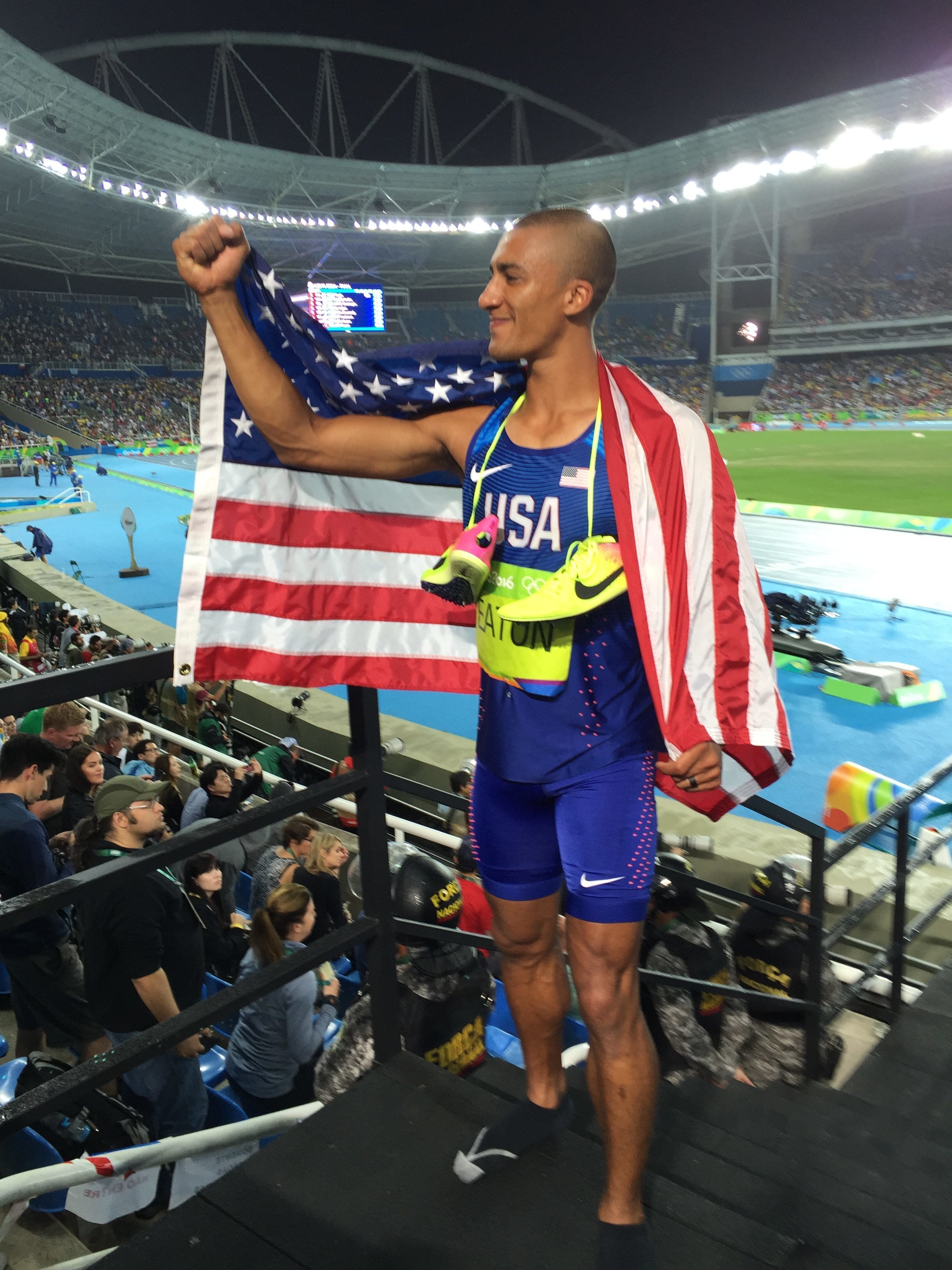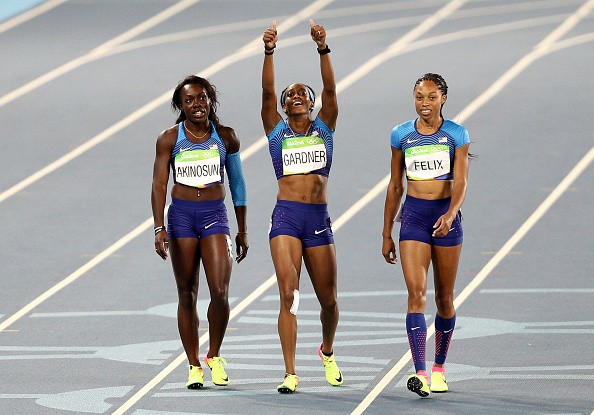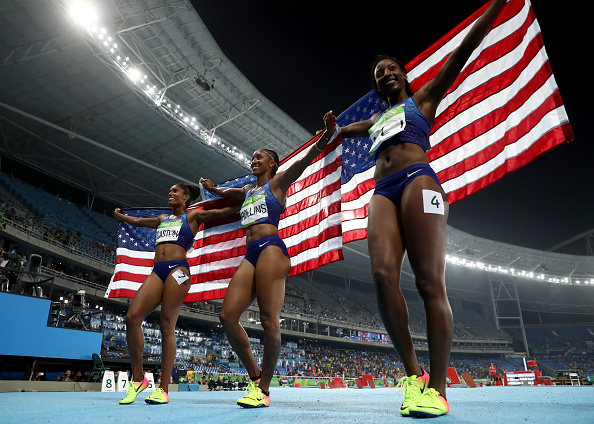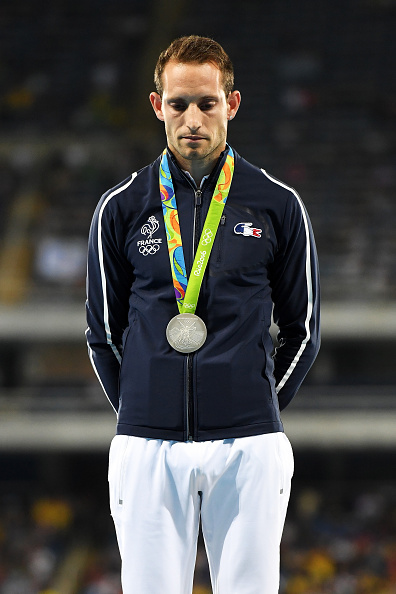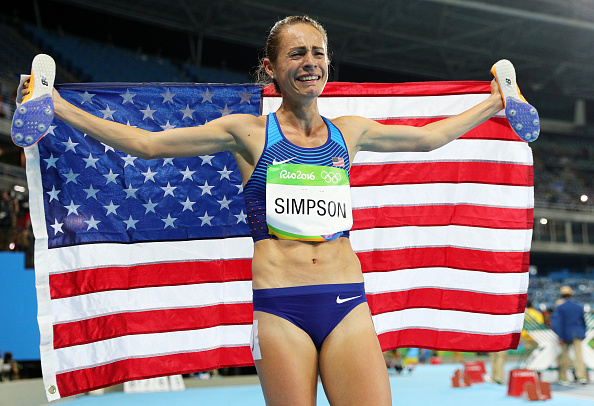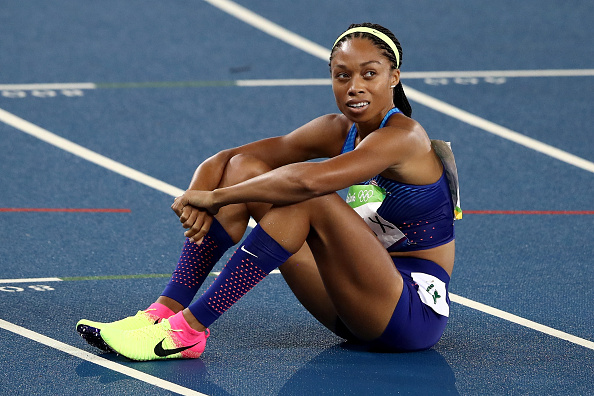In American track and field circles, there has for years endured a chronic amount of bitching about whether Olympic-caliber athletes can make a decent — if not better — living at the sport.
Much of the criticism, inevitably, gets directed at the national federation, USA Track & Field. And by extension, its chief executive, Max Siegel.
Preliminary figures made public Thursday shed considerable light on such criticism. The top-line, with a full breakdown below:
Combined, U.S. track and field athletes made at least $14 million in 2016. And 28 athletes made more than $100,000 apiece.
Importantly, those figures do not include shoe deals or appearance fees, the sport’s traditional money pots.
Of course, everyone is entitled to his or her opinion, even if all the whiners and complainers out there remain mired in yesteryear’s tiresome cycle of blame that typically seeks to advance personal agendas but, in truth, gets nobody anywhere. To emphasize: all constructive criticism, from anyone about anything, is always welcome. But: where are solutions? As Dwight Philips, chair of the USATF athletes’ advisory committee, put it in a rueful Nov. 23 post to his blog about missteps in professionalizing the sport, “We are constantly fighting internal battles that have prevented us from advancing this sport.”
Siegel, in line with his mandate, has been offering solutions since he took over five years ago.
Backing up: far too often, what Siegel and USATF do, and what they should be doing, is thoroughly misunderstood.
USATF is not in the business of charity. Nor does it underwrite “I work hard and I deserve to be helped” cases. If you have some talent, and lots and lots of people do, but at the same time you aren’t likely to compete for an Olympic medal, USATF is not likely to help. Nor should it. The federation has x in resource — x way up since 2012 because of Siegel along with chief operating officer Renee Washington and others — but is confronted with a, b, c all the way up to z and beyond in requests.
Entitled is one thing. Entitlement is, you know, another.
Start with the basics:
USATF’s primary mission is to win medals. This is also what the U.S. Olympic Committee demands. Upshot: The U.S. track and field team is winning medals. Bunches — starting with 32 in August at the Rio 2016 Games, the most at a non-boycotted Games since 1932.
U.S. women (Brianna Rollins, Nia Ali, Kristi Catlin) went 1-2-3 for a first-ever sweep in the 100 hurdles. Americans Tianna Bartoletta and Brittney Reese went 1-2 in the women’s long jump, Ryan Crouser and Joe Kovacs 1-2 in the men’s shot put. Matthew Centrowitz Jr. won the men’s 1500, the first American gold in the event since 1908. Paul Chelimo took silver in the 5,000, the first U.S. medal in the event since 1964.
Dalilah Muhammad won the first-ever gold by an American in the women’s 400m hurdles. Michelle Carter won the first-ever gold by an American in the women's shot put. Jenny Simpson's bronze was the first American medal in the women's 1500. Emma Coburn's bronze was the first American medal in the women's steeplechase.
Ashton Eaton reprised his 2012 London gold in the decathlon. So did Christian Taylor in the men’s triple jump. Allyson Felix left Rio with three more medals, bumping her up to nine over her Olympic career; in Rio, she became the most decorated woman in American track and field history.
At the 2016 IAAF world indoors in March in Portland, Oregon, the U.S. team won 23 medals. That tied a record.
At the 2016 IAAF world juniors in July in Bydgoszcz, Poland, the U.S. team won 21 medals. That tied a record. Of those 21, 11 were a meet-best gold. Kenya won five golds, nine overall; Ethiopia won four golds, 10 overall.
At the other end of the age spectrum: the 240-member Team USA won 168 medals at the recently concluded World Masters championships in Perth, Australia. California’s Irene Obera put on a Michael Phelps-like performance in the women’s-80 category. She won eight golds: 100, 200, 80-meter hurdles, 200-meter hurdles, long jump, heptathlon and the 4x100 and 4x400 relays. For good measure, she also won silver in the triple jump and bronze in the high jump. She turns 83 on Dec. 7.
Bottom line, part one: USATF is doing what is mandated to do.
Part two: the facts clearly demonstrate that America’s elite track and field athletes can do quite well financially.
In 2016, according to preliminary figures compiled by USATF and reported Thursday by Siegel in his state-of-the-sport speech, speaking at the federation’s annual meeting in Orlando, Fla., U.S. track and field athletes earned more than $14 million in publicly traceable sources of support.
To reiterate, because this is essential to understand in computing what a top-rank athlete really might have made in total: that figure does not — repeat, not — include personal shoe and sponsorship contracts, appearance fees and other private income.
So: not counting shoe deals and appearance fees, the precise figure in publicly traceable sources of support amounted to $14,053,538.
Breaking that down:
1. Athletes received nearly $7 million in cash from USATF program sources. The exact number: $6,998,604.
Here’s where that figure comes from:
— $2,610,050 in prize money at USATF championship events. This means the U.S. Olympic Trials, the U.S. indoor championships as well as road racing and cross-country championships.
— $1,855,004 from what’s called the “USATF elite athlete revenue distribution plan.” This is the program that gave $10,000 to every athlete taking part in the Rio 2016 Games along with money for medals.
— $1,923,250 in cash stipends. This comes through what’s known as the USATF Tier program.
— $610,300 in travel payments toward the indoors and the Trials.
If you are counting only cash generated through these programs, in 2016 one athlete got more than $100,000. Another 35, representing all event groups, were over $38,000. Further, 85 were over $25,000.
A broader breakdown of athlete income -- that is, cash and more -- can be found below.
2. Athletes got at least $4,445,004 from other publicly available revenue streams.
That means:
— published international prize money earned on the road and track
— Grants from the U.S. Olympic Committee’s “Operation Gold” program
— USATF Foundation grants
3. USATF support programs provided $2,609,930.
This includes U.S. Olympic Training Center programs, health insurance, sport performance workshops and other Tier programs.
For those not inclined to believe such support programs ought to count -- ask any of the Rio 2016 athletes, in particular the distance and middle distance runners, about the contributions of Robert Chapman, the USATF associate director of sports science and medicine. Siegel singled him out, and appropriately, in Thursday's address. The seven Rio medals won by Americans at distances 800 meters and up? Exceeded only in 1984 (nine), 1912 (eight), 1904 (eight).
Math: $6,998,604 + $4,445,004 + $2,609,930 = $14,053,538.
What did this mean for individual athletes? Here is that broader breakdown promised above:
In 2016, 28 athletes, 27 of them on the 2016 Rio team, made more than $100,000.
Siegel did not name names in his talk. But it's logical enough to reason out the exception: Keni Harrison, who would go on in July to set a world record 12.2 in the women’s 100 hurdles after finishing sixth in June at the Trials in Eugene.
In 2016, 111 athletes earned more than $38,000.
In 2016, 179 athletes were over $25,000.
Bottom line — 28 athletes made over $100,000, and for the third time, because when it comes to finances in track and field, this can’t be repeated enough: that does not include shoe deals or appearance fees, where traditionally the real money in the sport can be found.
“These numbers are preliminary but they are a start in an important process,” Siegel said Thursday.
This, too:
USATF membership now stands at 130,000. That makes for a 30 percent increase in paid memberships since 2011.
The national office, based in Indianapolis, is now paying for competition officials’ secondary insurance, including at non-USATF events. In English: this means professional liability insurance for those officials.
In 2016, USATF added four new sponsors: Chobani, Garden of Life, KT and NormaTec.
That means that since 2013 the federation has added 12 new business partners, Siegel saying Thursday, "I believe we’ve just scratched the surface as to where we can go. We have grown equity in the sports marketplace.”
Also Thursday, NBC announced what it called a "historic eight-year partnership" with USATF, 2017 through 2024, to televise at least 18 hours of track and field each year, eight on NBC itself.
If you know how to decode news releases, it's not just intriguing but essential to note this quote from NBC Olympics president Gary Zenkel, citing Siegel by name instead of just the federation generally: “We are pleased to continue our relationship on a long-term basis with USA Track & Field under of the leadership of Max Siegel.”
In answer to the ready critics:
1. Why is this deal hugely significant? Financial details were not immediately available. At the same time, understand that most Olympic sports pay instead of get paid. That is, U.S. Olympic sports federations must pay network production costs in exchange for air time -- just to be seen. Associated Press reported that the new NBC deal will greatly reduce USATF's costs, which have reached nearly $2 million annually.
2. Of course there are more than eight hours of NFL games on a single autumn Sunday. People, this is not the 1980s. Football is now king in so many ways. Track and field is taking steps. With Siegel, and the support of the USATF board, led now by Steve Miller, it is getting there -- again, in steps, not long jump-style leaps. To expect anything else is wholly unrealistic.
The federation is also, Siegel said Thursday, in talks for new agreements with, among others, the Penn Relays, National Black Marathoners Assn. and Running USA.
Further, in 2017 USATF will join up with the American Cancer Society in a bid to raise funds for cancer research and USATF Youth programs.
Next week is due to bring the formal announcement of a new partnership with YWCA USA to make the USATF “Run Jump Throw” program, in concert with Hershey, a part of what YWCA does around the nation.
“Partnership,” Siegel said, “is the key to the growth of any program and any organization.”
It’s a free country. Believe whatever you want. But — facts, please, especially when it comes to what’s really going on at USATF and in American track and field circles. There’s a lot of positive out there, for elite athletes in particular, and there's a lot of leadership, too, and in that context Vin Lananna was on Thursday elected USATF president, replacing Stephanie Hightower, who is now on the IAAF council. Both elements deserve to be acknowledged — as we all aim now toward Tokyo 2020 and the 2021 IAAF outdoor world championships, back in Eugene, the first-ever such IAAF worlds to be staged in these United States.




